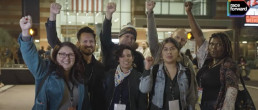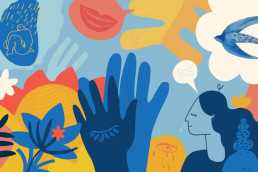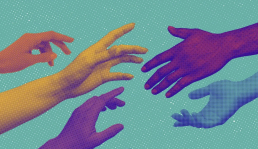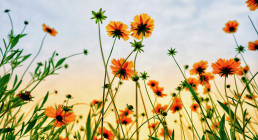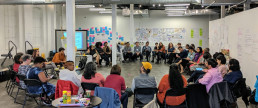MEASURING LOVE in the JOURNEY for JUSTICE
Below is the preface to this week's featured resource: Measuring Love in the Journey for Justice. Find the link to download this Brown paper at the end of this post.
MEASURING LOVE
Preface: A Sovereign Perspective
As this is a Brown—not white—Paper, we want to give some perspectives before you dig in. In a sovereign, self-determining perspective, we see Two Spirit people as sacred gifts. Children are treasured. Elders are respected and privileged. Womyn are beloved and respected and have power and voice. Fathers, sons, and boys are lifted up as the warriors, believers, and loyal friends that they are. Mothers, daughters, and girls are as valued as life itself, seen and treated as blessings. And all relations are sacred.
To be sovereign and free, our people need policies made of love, forgiveness, and connections.
As oppressed, exploited people of color in this work of social and racial justice, we have seen — and are seeing—children separated from their caregivers, caged in concentration camps. We are living in another era of the systemic denial of democratic civil rights. To be sovereign and free, our people need policies made of love, forgiveness, and connections. Our communities deserve health and educational equity; land and housing justice; economic independence; living wages (as in universal minimum income). Our people want restorative justice practices to replace punishment and lockup. Our communities want community organizing and advocacy, block by block. Our people need community controlled governance and accountability systems. We want civic leadership everywhere, as the right to vote goes with the rights to drive, assemble, drink, and travel.
This Brown Paper flips the script of what is acceptable as a “Paper” on its head. It is not a “formal,” research-based, finished product of the traditional type. It comes from the heart and is meant to be used—like love. It is meant to spark dialogue and provoke.
In it, we are asking ourselves, “Are we loving bravely enough?”
And “How much am I loving?” “What else I can do to be in community from a place of love?” and “How am I wielding power fused with love?”
These are the essential questions posed in our brown paper. We are excited to bring this out into the world to provoke, connect, and build with you.
We have so much to love. We love YOU because we know if you’re reading this paper, you know what it’s like to be powerless and not feel loved—and are working on bringing about more justice in the world.
We release our intentions into the universe. We want to know what your reactions are. We thank you for honoring us by your comments and discussion.
Spread your love. And, we know we are rising as one.

Download Measuring Love in the Journey for Justice HERE

Shiree Teng has worked in the social sector for 40+ years as a social and racial justice champion – as a front line organizer, network facilitator, capacity builder, grantmaker, and evaluator and learning partner. Shiree brings to her work a lifelong commitment to social change and a belief in the potential of groups of people coming together to create powerful solutions to entrenched social issues.
*After the Measuring Love Brown paper was released, Shiree's co-author was arrested on allegations of child molestation. She addresses this in a "Letter to Beloveds" - an excerpt from her next collaborative paper, Healing Love into Balance. (which will be highlighted at NW in the coming weeks.

Network Weaver is dedicated to offering free content to all – in support of equity, justice and transformation for all.
We appreciate your support!
donate in the box above or click here
Five Calls-to Action from the 2022 Facing Race Conference
What happens when thousands of racial justice leaders and practitioners come together after a pandemic? So much power and knowledge-sharing – and plenty of dancing and hugs, and even a few martinis!
At the 2022 national Facing Race Conference in Arizona, sponsored by Race Forward, participants were graced with gratitude for their work for racial justice, invited to be even bolder in our approaches, and instructed to avoid internal implosions at a time in which our organizations and the movement are needed the most.
I heard five important calls-to-action:
- Backlash Means We’re Winning. Keep Going!
We’re winning! The number of people of color leading and pushing change in institutions is at its highest levels. We see movement wins such as the growing people of color electorate and the halt of the Keystone pipeline. The use of the word “systemic racism” is now commonplace. We were encouraged to keep pressing forward and harder to break through on our biggest ideas. Opening plenary speakers said, “Fight for your impossible idea… and let us dream and fail.”
- Get out of Isolation. It’s Time for Reconnection!
We’ve become accustomed to quarantine and staying close to home but we were encouraged to move out of our comfort zones. Specifically, we were reminded to talk to people at their doors and to bring them back into protests and visible organizing. One speaker said, “we have to retrain people, including ourselves, to interact again, especially in person and in public.” At IISC, our mission is creating skills for collaboration and interaction. We’re exploring how we can enter and hold physical spaces with care while still centering those at risk from COVID through an equity and disability access lens.
- Don’t Underestimate White Nationalism. Expose and Bring it Down!
As distinct from the ideology of white supremacy, white nationalism is coordinated and direct action fueled by hatred and violence. Organization-building to support white racist and anti-semetic attacks and violence is on the rise and getting very sophisticated. From Boston to Michigan and Florida, leaders pointed to overt and well-organized actions in their communities from white nationalist organizations. They encouraged us to work with community organizations, government leaders, and neighbors to develop strategies to prevent their inroads and to frame messaging to drown out their discourse.
- Stop Internal Organizational Implosions. Build Organizations on Soul Work!
We heard a loud and clear call for each person inside an organization to take responsibility for extinguishing the internal fights we are waging against each other so we can focus on the external fights for justice. No organization, person, or leader is perfect so we can’t cast each other to the curb in punitive and harmful ways, stay in victimization, attack each other, and fall into gossip. They asked us to build our organizations so people can do their soul work and be liberated to do work with joy and happiness.
- Move Forward. Live into Possibility!
I was struck that you barely heard the name “Trump” around the conference. The focus was on moving and organizing for what we want and imagine. Not that we don’t pay attention to the war on our democracy and progressive values but that we go in the direction of creating even more conditions for change and living good personal lives as we do it. IISC held a workshop at the conference on fighting the return of the old normal by envisioning and leading for liberatory systems and racial justice transformation. We produced a resource guide to help you and other organizations do that while attending to the current challenges before us. Check it out.
In summary, we have power, we’re winning, and we need to reconnect and get our own house in order. Now that’s a push we at IISC appreciated and definitely needed, and maybe you feel that way, as well. We hope to see you at the next Facing Race conference in 2024.
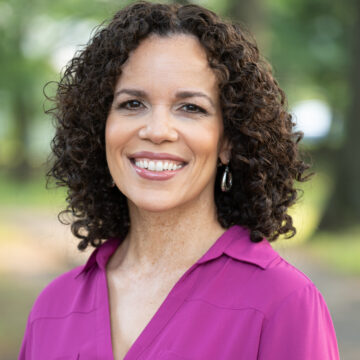
As president, Kelly Bates (she/her) leads the strategic direction of Interaction Institute of Social Change and supports its dynamic and diverse team of consultants and trainers to meet the organization’s highest aspirations for social change and racial equity.
Kelly is a social changer, nonprofit civic leader, and lawyer who for more than twenty-five years has led advocacy, organizing, racial justice, and women’s organizations promoting collaboration, equity, and civic engagement, both locally and nationally. She strives each day to develop and embody the heart, skills, and mindset of a facilitative leader and civic innovator for progressive movement building across the country and in communities.
originally published at Interaction Institute for Social Change on December 13, 2022

Network Weaver is dedicated to offering free content to all – in support of equity, justice and transformation for all.
We appreciate your support!
donate in the box above or click here
Network Weaving for Equitable Wellbeing
The following post was written for those who will be attending the Full Frame Initiative's (FFI) Wellbeing Summit in Charlotte, North Carolina December 11-14. The Interaction Institute for Social Change has been supporting FFI staff and signers of the Wellbeing Blueprint in developing network ways of thinking and doing as they work to ensure equitable wellbeing in systems ranging from health care to transportation to housing to education to legal aid to food and beyond. Feel free to sign the Wellbeing Blueprint by going to the link above and join the movement to make sure everyone has a fair shot at wellbeing!
"It really boils down to this: all life is interrelated. We are all caught in an inescapable network of mutuality, tied into a single garment of destiny. Whatever affects one directly, affects all indirectly.”
- Rev. Dr. Martin Luther King Jr. (minister, activist, civil rights leader)
What are networks, and why should we care?
Networks are collections of “nodes and links,” different elements that are connected to each other. These nodes or elements could be people, places, computer or airport terminals, species in an ecosystem, etc. Together, through their connections, these nodes create something that they could not create on their own. This is what some might call “collective impact” or what network scientists call “net gains” and “network effects.”
“While a network, like a group, is a collection of people, it includes something more: a specific set of connections between people in the group. These ties are often more important than the individual people themselves. They allow groups to do things that a disconnected collection of individuals cannot.”
- Nicholas A. Christakis (sociologist, physician, researcher)
Network effects and net gains can include the following:

- Resilience - The ability for a network to weather storms of different kinds, literal and metaphorical, and to bounce back from adversity. Healthy networks can bend without breaking.
- Adaptation - The ability for a collective to change with changing conditions. Healthy networks can rearrange themselves to adjust and respond to disruptions and perturbations.
- Small World Reach - The ability to reach others relatively quickly, across different lines of separation or difference (geography, culture, sector, etc.) . Healthy networks have a diversity and intricacy of pathways, so there are a variety of ways to reach many different nodes/members efficiently.
- Rapid Dissemination - Related to reach, this is about the ability to get crucial resources out to a wide variety of nodes in a timely manner. Healthy networks can ensure that different members can get the nourishment (information, ideas, money, food, etc.) they need to survive and thrive. (1)
“Connections create value. The social era will reward those organizations that realize they don’t create value all by themselves. If the industrial era was about building things, the social era is about connecting things, people, ideas."
-Nilofer Merchant (entrepreneur, business strategist, author)
Other “network benefits” can accrue to individual nodes or members of a network. For example, when surveying members of different kinds of social change and learning networks, some of what often gets mentioned as benefits include:
- Being with other people who inspire and support me
- Learning about topics relevant to my work
- Understanding the bigger picture that shapes and influences my work
- Gaining new tools, skills and tactics to support my work
- Having my voice and efforts amplified
- Accessing new funding and other resources
- Forming new partnerships and joint ventures
What is a healthy network?
“We are the living conduit to all life. When we contemplate the vastness of the interwoven network that we are tied to, our individual threads of life seem far less fragile.”
– Sherri Mitchell/Weh’na Ha’mu’ Kwasset (Penobscot lawyer, activist, author)
A healthy network is one that is able to achieve its collective purpose/core functions, while also addressing the interests of its members, and continuing to be adaptive to changing circumstances. Some key features of these kinds of networks include (2):
- Diversity of membership
- Intricacy of connections (many pathways between nodes)
- Common sense of purpose or mutuality; a sense of a “bigger we”
- Robustness of flows of a variety of resources to all parts of the network
- Shared responsibility for tending to the health and activity of the network
- Resilient and distributed structure(s) with a variety of shared stewardship roles
- A sense of equitable belonging and ability to give to/benefit from the network
- Ongoing learning and adaptation
Like any kind of living organism, networks require care and feeding to keep them vibrant. This is where network weaving comes into play!
What is network weaving?
“A network weaver is someone who is aware of the networks around them and works to make them healthier.”
- June Holley (writer, activist, network consultant)
Network weaving is an umbrella term for the practice of network leadership/stewardship, and it refers to a specific role. If you think about weaving with fabric, it is about bringing different strands together to create a tapestry or cloth of some kind. This can create beautiful patterns, functional garments, and also strength where individual fibers might otherwise be relatively weak. The same goes for weaving connections between people, places and ideas. This is what network weaving is about!
Network weaving is not necessarily the same thing as networking. Networking is generally about putting oneself at the center and making connections to others that create what is called a hub-and-spoke network (see middle image below).
“We never know how our small activities will affect others through the invisible fabric of our connectedness. In this exquisitely connected world, it’s never a question of ‘critical mass.” It’s always about critical connections.”
- Grace Lee Boggs (author, social activist, philosopher)
A core activity in network weaving is what is called “closing triangles.” (3) This happens, for example, when we connect people we know who do not already know each other. This effectively creates a triangle of connection (see the many triangles created through the connections in the left hand image above). These triangles, by extension, can bring the connections that those three people know together, potentially creating more diversity, intricacy and robustness in a larger network (see image below). This is how we can begin to realize a sense of abundance, if these many connections are actively engaged, sharing, contributing and caring for each other and the whole network.
The work of network weaving is also about strengthening existing connections, keeping them warm and engaged. This can happen through asking questions, making requests and offers, and sharing resources of different kinds. Beyond this core function of supporting greater connectivity, network weaving can also be about supporting greater alignment and coordinated or emergent/self-organized action in networks. Other key activities for weaving and activating networks include: designing and facilitating processes to achieve a sense of shared identity/destiny, creating conditions for self-organized and emergent action, curating resources, creating diverse communication pathways, and helping to coordinate joint ventures.
What do networks and network weaving have to do with a fair shot at wellbeing?
“Connectedness is a social determinant of health. The degree to which we have and perceive a sufficient number and diversity of relationships that allow us to give and receive information, emotional support and material aid; create a sense of belonging and value; and foster growth.”
- Katya Fels Smyth (wellbeing/justice advocate, Full Frame Initiative founder)
Wellbeing, as defined by the Full Frame Initiative (FFI), is “the set of needs and experiences that are universally required in combination and balance to weather challenges and have health and hope.” FFI notes further that everyone is wired for wellbeing, but we do not all have a fair shot at the core determinants of wellbeing, or what FFI uplifts as the 5 Domains of Wellbeing. (4)
- Social connectedness to people/communities that allows us to give and to receive, and spaces where we experience belonging to something bigger than ourselves.
- Stability that comes from having things we can count on to be the same from day to day and knowing that a small bump won’t set off a domino-effect of crises.
- Safety, the ability to be ourselves without significant danger or harm.
- Mastery, that comes from being able to influence other people and what happens to us, having a sense of purpose and skills to navigate and negotiate our life.
- Meaningful access to relevant resources like food, housing, clothing, sleep and more, without shame, danger or difficulty.
The first domain above has clear connections to networks and network weaving. Being embedded and engaged in supportive social networks is a great contributor to individual and collective wellbeing! Beyond this, being connected to others in authentic, caring and mutually rewarding webs of relationships can contribute to a sense of stability, safety, purpose, as well create access to resources (financial and otherwise) that sustain and enliven us. So let’s notice the networks around us, who is in them and who is not, who has access to the five domains and who does not, and invite others to do the same. Ask, ‘What systemic/structural changes need to be made for greater inclusion, equity and belonging?” And then together, let’s weave our way to everyone having a fair shot at wellbeingll!

“i think of movements as intentional worlds … not as an unfolding accident of random occurrences, but rather as a massive weaving of intention. you can be tossed about, you can follow someone else’s pattern, or you can intentionally begin to weave and shape existence.”
- adrienne maree brown (author, doula, activist)
For more on network weaving, see:
- 25 Behavior That Support Strong Network Culture
- 3 Mantras and 3 Small Moves for Advancing Networks
- Network Bridging: How a Regional Network is Creating New Connections, Flows and Opportunities
1. See NET GAINS: A Handbook for Network Builders Seeking Social Change https://www.researchgate.net/publication/238708418_NET_GAINS_A_Handbook_for_Network_Builders_Seeking_Social_Change
2. More on the health of networks can be found here, in the work of Dr. Sally J. Goerner - https://capitalinstitute.org/wp-content/uploads/2014/08/000-Goerner-Regenerative-Development-Sept-15-2015.pdf
3. See more about network weaving and closing triangles at http://www.thenetworkthinkers.com/2009/11/network-weaving-101.htm
4. https://fullframeinitiative.org/wp-content/uploads/2020/12/Five-Domains-of-Wellbeing-Overview.pdf
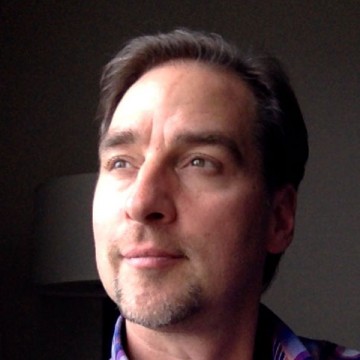
About the Author:
Much of Curtis Ogden's work with IISC entails consulting with multi-stakeholder networks to strengthen and transform food public health, education, and economic development systems at local, state, regional, and national levels. He has worked with networks to launch and evolve through various stages of development.
Originally published at Interaction Institute for Social Change on Nov 29th & Dec 6th
featured image found HERE

Network Weaver is dedicated to offering free content to all – in support of equity, justice and transformation for all.
We appreciate your support!
donate in the box above or click here
A Future for All of Us
AN EXCERPT FROM RACE FORWARD'S REPORT ON PHASE 1 OF THE BUTTERFLY LAB FOR IMMIGRANT NARRATIVE STRATEGY
IN 2018, DURING THE HEIGHT OF THE TRUMP ADMINISTRATION’S attacks on migrants, immigrants, and refugees, a landmark study warned pro-immigration forces that “attitudes towards immigrants and immigration are extremely complex: even those who appear to be pro-immigrant (who even think of themselves as pro-immigrant) are often very conflicted.”
A majority of Americans support the idea that migrants, immigrants, and refugees deserve to belong and thrive. Many recoiled from horrific images of family separation, violence against migrants at the border, and white nationalist violence against immigrants in cities like El Paso. Yet when the country locked down under the threat of the coronavirus and the Trump administration nearly shut down the entire immigration system, too few stood up to challenge these severe policies.
How does the pro-immigrant movement begin to confront such contradictions? To begin to answer this question, it might be better to look not to the tools of policy in the realm of traditional politics, but the tools of narrative in the realm of culture.
Cultural change precedes social change. Narrative drives policy. This is why we must be as strategic and rigorous in building narrative power as we are in building all other forms of power. Narrative is the space in which energies are activated to preserve a destructive system or build a better world for us all.
Right now, anti-immigrant forces continue to shape the dominant narratives around migrants, immigrants, and refugees, claiming that they are exploitable, expendable, criminal, and unworthy of equal treatment. These dominant narratives have fostered policies that terrorize migrants, immigrants, and refugees emotionally, economically, and physically. They protect a harmful status quo.
We are called instead to forge a new consensus. We must move a majority of people to imagine and act to create a world that does not yet exist. In order to make this world a reality, we need to orient ourselves toward the world we want to win, and make this future tangible and irresistible to a majority.
In this first phase of the Butterfly Lab for Immigrant Narrative Strategy, we hosted sixteen leaders to develop, test, and align narratives that meet our current political moment and advance our vision for the world we want to build. We supported their work with research,coaching, and funding. We were heartened by the many breakthroughs we made together.
Our work in the Butterfly Lab in this first phase affirms what we have known and gives us some directions to advance the movement towards more strategic alignment. We found:
• Nearly everyone believes immigrants deserve to belong and thrive.
• But many find it difficult to imagine an America in which that may be true.
• Core audiences respond well to all tested narratives, including those focused on shared humanity, compassion, dignity, and respect.
• But stretch audiences do not respond well to those aforementioned narratives. They do respond well to narratives of striving, responsibility, and liberty.
• Our narratives need to make sense of the past and present, and point toward immigration futures that are compelling to all.
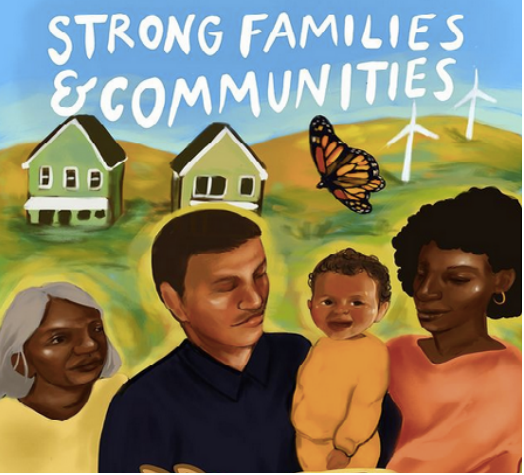
Immigration remains the “third rail” of progressive politics. And yet, even in these discouraging times, we believe it is possible to win. When we look at the cultural transformations that other recent narrative movements—from “love is love” to #BlackLivesMatter—have made, we see pathways forward. Over a long period of time, many people built narrative infrastructures that could work in concert with policy infrastructures. When narrative power-building met the social moment, cultural inflection points turned policies previously thought unreasonable into ideas worthy of serious consideration. With immigration, we too must invest in narrative as key to winning power for migrants, immigrants, and refugees.
In this report, we share with you learnings, frameworks and tools, and insights into directions we can take to move forward together. Whether you are an advocate or artist, a long-time veteran of the culture wars or thinking about how to apply narrative or cultural strategy for the first time, this report is designed to work for you.
It is also designed to help you think and act at multiple scales—locally, regionally, or nationally—with rigor, alignment, and purpose. The best narrative strategy should foster a unity of intention with a diversity of voices, approaches, and methods. It should help people work together with a sense of alignment along different timelines and fronts. We want this report to be used to build skills, capacities, and networks within the movement, and, above all, to help all of us approach narrative strategically.
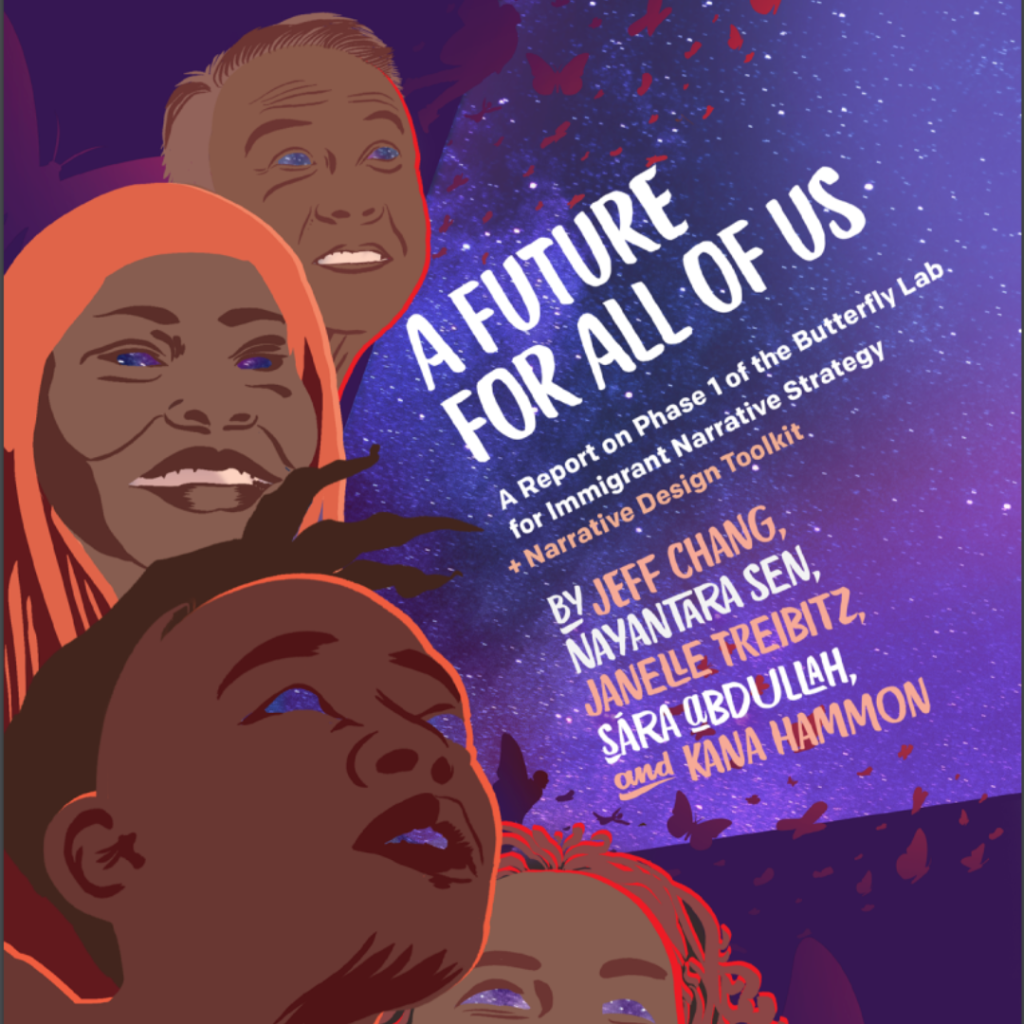
You can access the full report at Race Forward HERE or at Network Weaver HERE
You can also access a standalone version of the toolkit HERE

Race Forward catalyzes movement building for racial justice. In partnership with communities, organizations, and sectors, we build strategies to advance racial justice in our policies, institutions, and culture.
About the Butterfly Lab: Race Forward’s Butterfly Lab was launched in 2020 to build power for effective narratives that honor the humanity of migrants, refugees, and immigrants, and advance freedom and justice for all.
Network Weaver is dedicated to offering free content to all – in support of equity, justice and transformation for all.
We appreciate your support!
donate in the box above or click here
Strengthening Social Connection and Opportunities in Rural Communities
This brief describes an unfolding learning journey intended to strengthen social connection, resident voice, and agency to address inequities in rural health and well-being. Along the way, we have come to realize the important lessons for each of our institutions and ways in which we are better off for having taken this approach to our work.
At St. David’s Foundation, we believe that realizing health equity to minimize the consequences of poverty and racism reflected in the social determinants of health is foundational in our work in Central Texas. Rural communities are dramatically under-represented in philanthropic investments nationwide and in Texas, and the Foundation’s own balance of investments skews toward initiatives that serve urban populations. When philanthropic dollars are invested in rural communities, they are typically directed to the few established nonprofits and local government entities that implement programs or provide services to residents. Community members, especially people experiencing vulnerability and isolation, are rarely asked what they need to improve their health and quality of life and how they may utilize the power inherent in their communities to contribute to those improvements. The most common observation from the philanthropic sector is that “these residents” are rarely poised to receive and control funds to work on the issues they believe are most important for the health and well-being of their own community. Listening and enabling capacity can change that.
Listening to our Rural Neighbors
After a sustained period of building deeper ties and stronger relationships in our rural communities surrounding Austin and Travis County, the Foundation learned that many of our rural neighbors felt disconnected from and ignored by the Foundation and local decisionmakers in their communities who decide how resources are prioritized and distributed to address community needs. Residents from the surrounding rural counties of Bastrop, Caldwell, Hays, and eastern Williamson County expressed an interest in working with the Foundation and their peers on priority concerns including youth, mental health and substance use and misuse, food insecurity, and affordable housing.
Community Capacity Building and Enabling as Rural Strategy
In partnership with The Strategy Group (TSG), a national consulting firm with expertise in catalyzing resident-led community networks focused on health and well-being, the Foundation invested in community capacity building (CCB) strategies to engage interested residents in working collaboratively on issues of importance to community members and enable their inherent power to participate in problem solving.
Informed by residents, the Foundation and TSG co-designed an approach that incorporated key community capacity building outcomes so that residents could develop their own solutions to pressing self-identified community health concerns. TSG also offered a process for the Foundation to build its own capacity to invest differently in rural communities— an approach that invested in network infrastructure, resident leadership development, nonprofit leadership to partner with and support community networks, and connected people experiencing vulnerability and lack of connection to opportunities for community development.
The Foundation’s rural strategy centered social impact networks (Plastrik et al 2014), network weaving (Holley 2012), and sustained community engagement to create an expanding, diverse, inclusive resident-led network focused on health and wellbeing -inequities often reinforced by historical and structural legacies of exclusion and privilege. Stuart (2014) notes, “this is one of those cases where a commitment to social justice is crucial. It is important to consider who is included in the “community” that is leading the process. Who is excluded from community leadership? Whose voices are missing from community debate? Whose interests are being served?”
And if the community is driving decisions about their own development, what does that mean for how the Foundation should be investing in community?
Centering Equity and Equitable Opportunity
As St. David’s Foundation has embraced and prioritized health equity, rural investments evolved to become more place-based and community-focused. How the Foundation showed up in the community (and how frequently), how grant opportunities were presented, and how funds were distributed when CCB was the overarching purpose changed the nature of the relationship between funder and community. In our rural work, the Foundation recognized that a portion of our rural investment needed to give the community control over decisions and resources to determine what resources were needed to spur or make lasting change.
Bringing it all Together in Central Texas
The community network approach in Central Texas prioritizes:
- Centering the voices and lived experiences of rural BIPOC residents (equitable opportunity);
- Seeding a network of interested resident leaders who have a deep understanding of their and their neighbors’ needs to direct their own community development work; creating new relationships; and offering new ways of working, thinking and leading in community; (i.e., social impact networks);
- Engaging and supporting local residents to organize themselves to work on projects that move the community from talking about problems to taking action on problems (i.e., self-organizing);
- Supporting residents who want to develop the leadership skills to engage other residents to work together in a resident-led network focused on health and wellbeing (i.e., network weavers); and
- Putting a pool of resources into the hands of those who have the lived experiences of health inequity, poverty, social isolation; are closest to community problems; and who want to work with their peers to improve community health and wellbeing from a solidarity stance.
What are Networks and Network Weavers?
Social impact networks (like the ones emerging in Central Texas) are constellations of people, organizations, and communities connected by a shared purpose to make change. In the Central Texas network, there is a high-level purpose to improve the health and wellbeing of residents in the region.
Network weavers are residents in the Foundation’s rural service area who have chosen to be a leader in the network; they are the “engines” of our regional network. Weavers strategically connect other residents, convene groups of interested residents, coordinate small projects aligned with resident interests and needs, and work to grow the network and the projects the network is interested in pursuing. Holley (2012) describes a network weaver as “someone who is aware of the networks around them and explicitly works to make them healthier. Network weavers do this by helping people identify their interests and challenges, connecting people strategically where there’s potential for mutual benefit, and serving as a catalyst for self-organizing groups.”
The Foundation provides operating support for TSG as well as funds to support network infrastructure (e.g., communications, evaluation, training, storytelling), stipends for weaver leaders, and shared gifting circles. To date, over 100 residents have been trained to be network weavers in Central Texas.
Building Community Leadership
The Foundation’s investment in community capacity building by catalyzing resident-led networks and training residents to become network weavers is designed to engage and support residents to contribute their time and talents (i.e., community leadership) to solve pressing self-determined health and wellbeing challenges in their own communities. Residents also participate in monthly peer assist sessions which enable real-time feedback and advice from peers as they practice their leadership skills.
Participatory Grantmaking
Using participatory grantmaking processes and resources, network weavers are supported to identify local problems and then work collaboratively with other residents to co-design and test solutions. Shared gifting emerged as an important participatory grantmaking tool to support weavers during the second year of project implementation. We asked ourselves: “how can a small pool of grant funds be used to foster connection across different communities and authentic collaboration, rather than competition?” Shared gifting allows residents to decide what the most urgent community needs are, rather than the Foundation, and then to grant dollars to community projects they wish to support. There are no required outcomes of the process other than what is determined by the participants during the shared gifting process.
From participant reports of the shared gifting process, we were excited to learn that a shift in control of grant funds from the Foundation to the group of network weavers (residents) created an environment of social connection, equity, encouragement and support, feelings of abundance, and community. The typical grantmaking experience of competition and scarcity often experienced by potential grantees when responding to competitive grant opportunities was not reported by participants. Instead, weavers were excited to make new connections with other weavers, hear about new projects happening in their community, extend offers of time, talent, and treasure to other weavers, and expressed pride to be able to support those projects with the resources they controlled.
Conclusion
Residents who have participated in network weaving and participatory grantmaking have shared a common experience of personal and professional transformation, social connection, empowerment, and awareness of new possibilities and promise for their communities. The Foundation’s experience of investing in rural communities and its people by creating opportunities for resident decision making about how resources should be directed to pressing issues in their communities has revealed new possibilities for grantmaking and use of our social capital to advance the health and wellbeing of rural residents in Central Texas. Further, the experience with weavers as grantmakers underscores the importance and urgency of integrating community voice consistently in the Foundation’s equity-driven journey.
Voices and Learnings
Network weavers were invited to share their thoughts on how weaving has influenced their personal and professional lives. The themes found in their comments were that network weaving:
- Offers both professional and personal value to persons.
- Provides a framework that is valuable to tackle complex community issues.
- Facilitates making connections that create change in the community.
- Allows the use of shared gifting as a unique learning, connecting, and growing experience.
- Fosters among network weavers a desire to build new skills and capacities to continue to strengthen their work within their own communities.
- Encourages persons who had existing networks to make those networks more effective, efficient, and stronger by implementing what they learned in the Network Weaving learning opportunity.
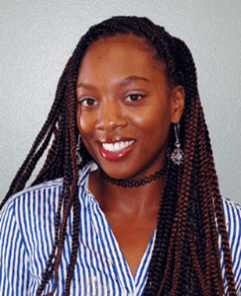
“Weaving has tremendous value as it has empowered me to create with others outside of my usual network, helping to expand my reach and capacity to support others.“
“Throughout the past few years, in a mid-COVID society, Network Weaving has proven to be a skill set and collective necessity to maintain community collaboration. As work-life has evolved and more individuals experience isolation, Network Weaving has made the ability to connect (in-person or virtual) a go-to process for me in my personal and work life.“
Krystal Grimes, 2019, Shared Gifting Grantee/Grantmaker
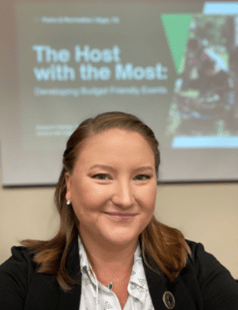
“Ultimately, all of us have the same end goal of building a better community. We all are here for the same reason; we’re all doing this work because we have a passion for community building. And network weaving has really given us that opportunity.”
“It has given me a really clear framework for what I’m doing. It’s not something that lives in my brain. Now. it’s an actual process and an actual framework that I can utilize to share information.”
Elizabeth Marzec, 2021, Organizational Leader, Shared Gifting Grantee/Grantmaker
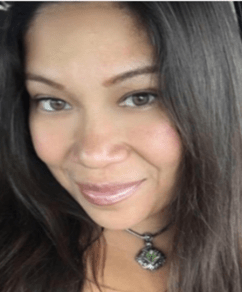
“Helping the community that you live in, helps you, it helps your children and helps your grandchildren. So, I think that is the point in the future that weaving really impacts.”
Linda Quiroz, Shared Gifting Grantee/Grantmaker
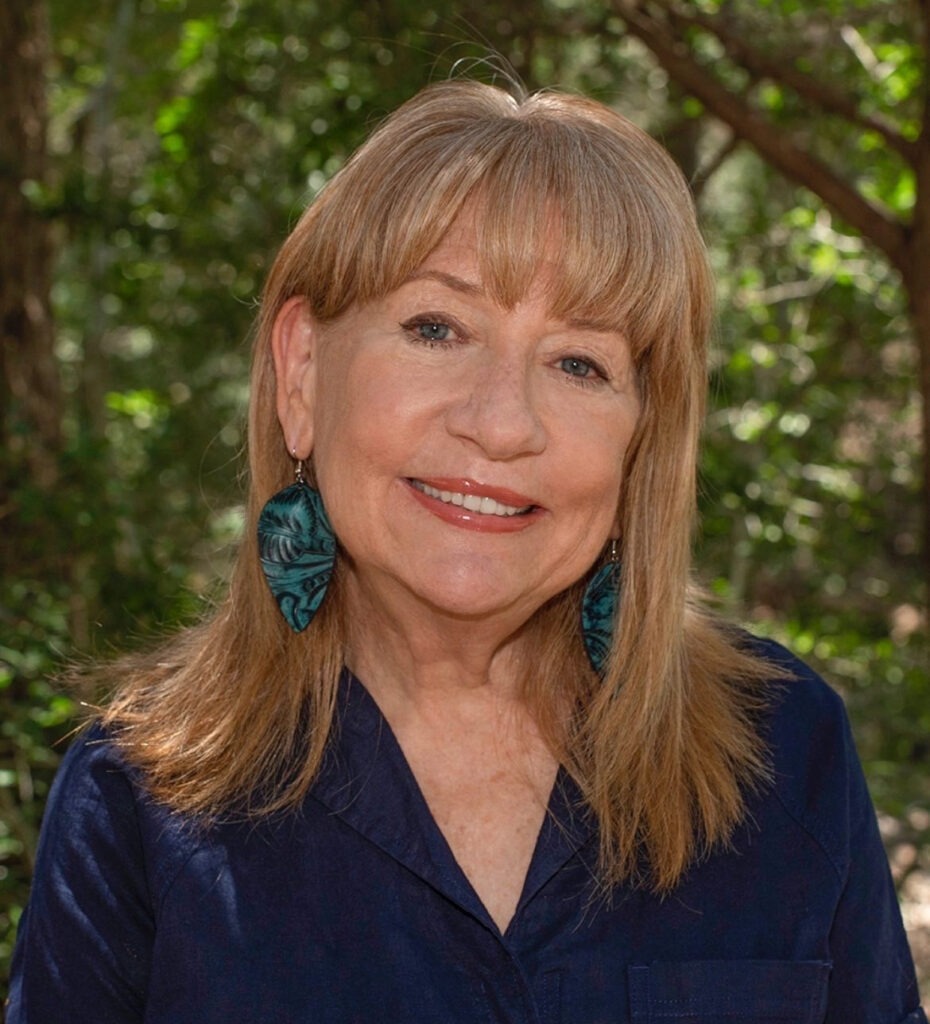
“Bringing leaders together, making community change, and having people who never thought of themselves as a leader know that they can all make a difference. I love that.”
Kathleen Moore, 2019, Shared Gifting Grantee/Grantmaker
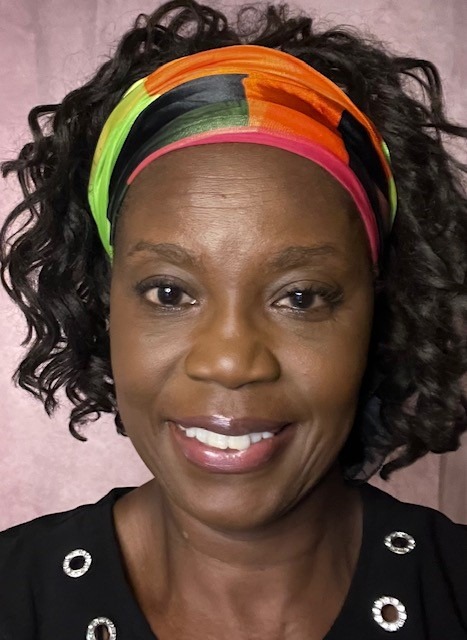
“Prior to network weaving, I had no idea how to get this passion, this idea realized . . . I’m trying to be involved in the community. But I needed direction. I needed ideas, I needed strategies. And so, when I was invited [to learn about network weaving], it gave me what really felt like a breath of fresh air, because I’m going to be around peers that can help me along the way. And then also for me to help others.”
Sonya Hosey, 2021, Shared Gifting Grantee/Grantmaker
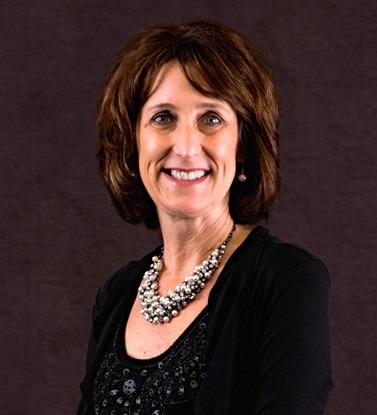
“I think about the word power. And that power is shared. It doesn’t belong to one person or group . . . and I love that about network weaving,”
“I have watched the whole design of network weaving just open this road for people to speak and share and dream, and nothing is impossible”
Maureen Stanek, 2019, Shared Gifting Grantee/Grantmaker
References
Holley, J. (2012). Network weaver handbook: A guide to transformational networks. Athens, OH: Network Weaving Publishing.
Moore, W. P., Klem, A.M., Holmes, C.L., Holley, J. and Houchen, C. (2016). Community innovation network framework: A model for reshaping community identity, The Foundation Review, 8(3). DOI: http://dx.doi.org/10.9707/1944-5660.1311.
Plastrik, P., Taylor, M., and Cleveland, J. (2014). Connecting to change the world: Harnessing the power of networks for social impact. Washington, DC: Island Press.
Stuart, G. (Apr 10, 2014). What is Community Capacity Building? Impact Initiative.

Abena Asante has over twenty years’ experience in philanthropy, public health, and the nonprofit sector. A senior program officer at St David’s Foundation, she leads efforts that catalyze community action around issues and opportunities that align with the Foundation’s firm commitment to achieve health equity.
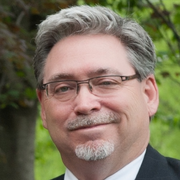
Dr. William Moore is Principal at The Strategy Group, a Kansas City-based international consulting firm supporting nonprofits, foundations, and communities. Bill is a Senior Fellow at the Midwest Center for Nonprofit Leadership at the University of Missouri – Kansas City, Senior Associate for Rural Health at the Texas Health Institute, and is the rural health advisor to the St. David’s Foundation.
originally published at gih.org
A in Politics from the University of Edinburgh and studied at Sciences Po, Paris as an Erasmus scholar.

Network Weaver is dedicated to offering free content to all – in support of equity, justice and transformation for all.
We appreciate your support!
donate in the box above or click here
Belonging to ourselves, each other, and the earth
From decolonization to... re-indigenization?
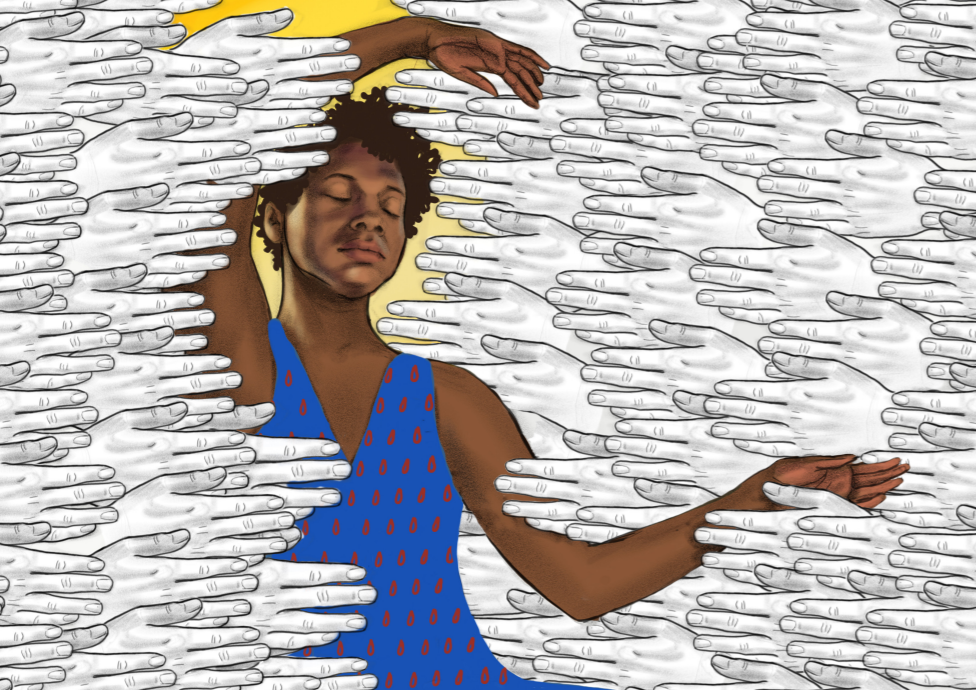
I’ve found myself increasingly interested in the promise of ‘embodiment’: the possibilities inherent in the seemingly simple act of being attuned to what our bodies are telling us. Thus far I’ve explored that concept primarily through the lens of the self, of the ‘I.’ But there’s more to it than that, something that feels powerful.
So today I want to explore the transformative potential of learning to sense and feel at three different levels: what in Building Belonging we call the levels of “I, We, World.” The promise of belonging is the promise of integration: it’s about belonging to ourselves, to each other, and to the earth.
“All transformation is linguistic”… and embodied?
This topic is especially hard to think and write about clearly because we lack the language. It’s difficult to conceptualize something if we can’t name it (an insight made famous in Betty Friedan’s discussion of “the problem that has no name.”) It was perhaps with this in mind that Peter Block provocatively wrote “All transformation is linguistic.”
I think he’s right… and the sentiment is incomplete. I do think the power of naming something is itself a transformative act: it allows us to see things in a new light, to understand an aspect of our experience that had thus far remained inaccessible. As Robin Wall Kimmerer wrote:
Language is the dwelling place of ideas that do not exist anywhere else. It is a prism through which to see the world.
But language is a starting point for transformation; it creates possibility. To realize that potential, however… requires embodiment.
This is the core insight of the emerging field of somatics, which deals with the “soma” (the Greek word for “body”). It’s at once an obvious and a radical idea: of course we move through the world in physical bodies, and of course those bodies inform our perceptions. And yet: Western culture tends to dismiss any forms of knowledge or information that are not “rational,” and emerging from the brain (I think, therefore I am). Indigenous cultures the world over have always held a more expansive view of human experience, talking instead of the heart, mind, body, and spirit. As Pat McCabe (Woman Stands Shining) notes,
The intellect is the least reliable way of knowing anything.
So I want to explore here (as always) the possibility of the both/and. Yes there is a power in naming something, in rendering a concept intelligible and accessible through words. And that’s not enough. There are other ways of knowing, feeling, and sensing… and it is these other ways that I want to explore today… at the level of I, We, and World. As MawuLisa Thomas Adeyemo said:
If we listen to our body, there is so much we can learn.
Belonging to ourselves: decolonization
There has been an emerging discourse in recent years about decolonization. There’s more there than I can unpack in this post, but the core concept is captured in the word itself: it is the antithesis to colonialism. It is a process of undoing, of unlearning… of practicing a different way of being.
Colonization is about conquest, growth, domination, enclosure, enforced scarcity, certitude about a singular way of being… it demands assimilation. Decolonization invites us to return to a world before colonization, to undo the ravages of the colonial mindset: to replace domination with partnership, growth with regeneration, conquest with harmony, scarcity with abundance… and embracing multiple ways of being. Decolonization invites a return to right relationship: with ourselves, each other, and the land on which we depend. We can understand colonization as a form of trauma at multiple levels. As Susan Raffo reminds us:
All trauma is collective, but we experience it individually.
This experience of trauma and fragmentation inspires resistance; humans are resilient, and we seek re-integration. Quoting Jacqui Alexander, the Gesturing Toward Decolonial Futures collective (amazing name!) puts it this way:
The material and psychic dismemberment and fragmentation created by colonialism also produce “a yearning for wholeness, often expressed as a yearning to belong, a yearning that is both material and existential, both psychic and physical.”
Yes. That’s it: a yearning for wholeness, for belonging. This is the desire animating the decolonial urge.
I’m coming to believe that the surest and swiftest path to decolonization is through embodiment, through learning (remembering) to feel and hear what our bodies are telling us. I was delighted to finally find the word for this last year: interoception describes our felt sense of our body’s internal states (hunger, anger, tightness in the chest, lump in the throat…). This is where most somatics work is done: at the level of the ‘I’ and our relationship to our own bodies. And in a cultural context that teaches us from our earliest ages to disregard and override what our bodies are telling us… it’s revolutionary work.
So here’s the idea I want to offer here: interoception (intentional embodiment) is one powerful way we can practice the art of decolonization. It is about reconnecting with ourselves, and orienting toward this truth: the body knows… if only we listen to it. There are many ways to practice: yoga, somatics itself, other forms of bodywork that invite deeper attunement to what our bodies are telling us.
Belonging to each other: cultural somatics?
Here’s another truth I’m coming to: all transformation is relational. If no one is an island… then surely our efforts to transform must start from that premise? Here’s Parker Palmer:
If we are willing to embrace the challenge of becoming whole, we cannot embrace it alone—at least, not for long: we need trustworthy relationships to sustain us, tenacious communities of support, to sustain the journey toward an undivided life. Taking an inner journey toward rejoining soul and role requires a rare but real form of community that I call a “circle of trust.”
Here again words fail us. I’ve been looking for the word that describes sensing into a collective: picking up the vibe in a room, feeling each other without touching. We all do it all the time… how can there not be a word for it? If you know the word I’m looking for, please share! Other languages besides English also welcome (not surprising that the colonizers lack words for a decolonial construct…)
There are some concepts that get close: “co-regulation” describes the idea that we synch to each other’s moods. But the concept I find most enticing here I first encountered through Tada Hozumi in their exploration of “cultural somatics.” Here’s how Prentis Hemphill puts it:
Culture is a place to tend to our collective embodiment.
Basically, the idea is that we have a collective “soma”: our individual bodies are part of a broader whole that we can feel and sense, and which exerts an influence on us. I think we all know this to be true (at least the idea that we are subtly influenced by those around us), but we don’t often acknowledge that reality. As Charlotte Rose observed:
We are animal bodies near other animal bodies. And we influence and impact each other all the time.
I’m not sure exactly what good practices are here for learning how to practice collective embodiment. I feel confident in echoing the refrain that transformation is inherently relational, and therefore the first thing we must do is find a community within which to practice. Brené Brown had a beautiful line here:
The key to building a true belonging practice is maintaining our belief in inextricable human connection. That connection—the spirit that flows between us and every other human in the world—is not something that can be broken; however, our belief in the connection is constantly tested and repeatedly severed.
I would go farther: it’s both a belief and an opportunity to practice in community. Skillful facilitators can help us; Ria Baeck talks of “collective presencing” as one methodology, but honestly this remains an area of inquiry for me. How can we learn to sense, feel, and act on collective embodied intelligence?
Belonging to the world: re-indigenization?
Our relationship to land is a whole post in its own right… I just want to touch on one concept here. I believe that disconnection is core to our current crises, and that re-integrating is a huge piece of the solution. Our loss of connection to land remains an open wound that we haven’t addressed… and I don’t see a way forward that doesn’t involve repairing that wound.
Indigeneity at its core is about belonging to land: it’s about living in right reciprocal relationship with the earth. Most of us have lost that. Derek Rasmussen had a beautiful article for YES! Magazine where he contended that we (White people in western cultures in particular, but to some extent all of us) are the first non-indigenous civilization in the history of the planet. These different forms of disconnection are of course related: to be separated from land is also to be disconnected from people, from our ancestry, and therefore from ourselves. Gibran Rivera observed:
We are the first generation to steal from our descendants, because we have forgotten our ancestors.
It affects all of us, for by now nearly all of us have been forcibly displaced by factors beyond our control. As Simone Weil wrote in her classic The Need for Roots: “Whoever is uprooted himself uproots others.” This is not to erase agency or accountability, but to acknowledge a long history of colonization (and trauma) that underlies its contemporary manifestations. Wendsler Nosie, a spiritual leader to the Apache living on San Carlos Apache reservation, explains:
When native people talk about decolonizing, you know everybody has to become decolonized. Everybody has to wake up to what is happening. White people are the oldest people that are colonized, then the rest of us we come after that. We’re all blind from being colonized.
The idea I’m trying to convey here is that the earth (the entire planet as a whole, but more specifically the particular land where we find ourselves) has its own “soma” that we feel, sense, and respond to. This is literally true, not a matter of spiritual conjecture. Here’s David Abram:
The body is always in a subtle interaction and engagement with the large vast body of the Earth itself.
Increasingly scientists are “discovering” what indigenous people have long acknowledged: we are inextricably connected. Greater Good Science Center recently ran a podcast on why we enjoy nature exploring what happens in our brains as we interact with the natural world… it is literally restorative for our brains and bodies. Anyone who has breathed the smell of a forest after a rain can attest to a truth science is now confirming. Robin Wall Kimmerer summarizes the research:
Breathing in the scent of Mother Earth stimulates the release of the hormone oxytocin, the same chemical that promotes bonding between mother and child.
As any gardener or farmer can attest, we all know this, deep in our bodies. We just don’t often stop to acknowledge that fact. I was reading the children’s classic Heidi with my 6-year-old where the narrator observes:
It is good to be on the mountain. Body and soul get well, and life is happy again.
Healing the land is healing ourselves
I found myself nodding along as Kim Smith, an indigenous Diné organizer explained that violence to the land is violence to ourselves. This landed with the ring of truth: it explains the visceral feeling I get when I see a clearcut in an otherwise majestic forest, or oil-soaked animals washed up on the shore after an oil spill. How else to describe that sensation if not pain? Loss?
But this too points the way forward, for the inverse is also true. As Shane Bernardo reminds us:
In healing the land we are healing ourselves, and in healing ourselves we are healing our ancestors.
But there is a sequencing here. As Glennon Doyle wrote in Untamed: “nothing can be healed if it’s not sensed first.” Channeling trauma researcher Bessel van der Kolk, Maria Popova explains:
In order to change, people need to become aware of their sensations and the way that their bodies interact with the world around them.
Again, words fail us. I believe re-indigenization is the process, but what is the name for the practice, for the act of sensing/feeling our interdependence with the earth? I just finished reading Black futurist N.K. Jemisin’s Broken Earth trilogy, and she introduces the word “sessing” to describe this (makes me think of how animals can detect earthquakes before humans… perhaps we too could cultivate that skill?)
The closest I’ve been able to find outside the world of sci-fi is the concept of “entrainment”: the notion that bodies (including objects we would consider inanimate!) have a tendency to synchronize when in contact over time.
Names are the way humans build relationship
I want to close by offering two domains of practice, returning to our theme of connecting the transformative power of language and embodiment. The first shift is linguistic: to recognize the earth and non-human life as beings worthy of respect and consideration. Here’s Ursula Le Guin:
One way to stop seeing trees, or rivers, or hills, only as 'natural resources,' is to class them as fellow beings—kinfolk. I guess I'm trying to subjectify the universe, because look where objectifying it has gotten us.
Robin Wall Kimmerer has made this a key feature of her writing and work, even offering us a pronoun echoing Le Guin: ‘ki’ (as a singular form of the plural ‘kin,’ but also a play on the French pronoun ‘qui,’ meaning ‘who’). She explains:
Names are the way we humans build relationship, not only with each other but with the living world.
“What the hands do, the heart learns”
I first encountered this concept via Movement Generation, as a welcome reminder of how humans learn and transform. Through embodied action. Katherine Gibson and Julie Graham put it well:
If to change ourselves is to change our worlds, and the relation is reciprocal, then the project of history making is never a distant one but always right here, on the borders of our sensing, thinking, feeling, moving bodies.
So… how to do that? Arawana Hayashi, creator of the art of Social Presencing Theater, offers a practice called “Body Knowing as a Vehicle for Change”:
It is an invitation to feel the connection, naturally present, between our body and the earth body.
David Abram offers another prescription:
Falling in love with the more than human earth is the deepest medicine we have available.
I’ve been ruminating on this post for a while, and struggling to find time (and words!) to convey the concepts that feel so connected to me. I’d love to know what resonates, and if you’re finding terms/ways to practice connecting yourself, each other, and the world.

Brian Stout is a systems convener, network weaver, and initiator of the Building Belonging collaborative. His background is in international conflict mediation, serving as a diplomat with the U.S. Agency for International Development (USAID) in Washington and overseas. He also worked in philanthropy with the Bill & Melinda Gates Foundation, before leaving in early 2016 to organize in response to the global rise of authoritarianism and far-right nationalism. He recently returned to his hometown in rural southern Oregon, where he lives with his wife and two children.
originally published at building belonging

Network Weaver is dedicated to offering free content to all – in support of equity, justice and transformation for all.
We appreciate your support!
donate in the box above or click here
What do we mean by “community”?
Since the inception of Building Belonging, we’ve wrestled internally with this question: what are we? On our homepage we say we are:
A home for people committed to building a world where everyone belongs… We are a community of people working toward transformation and liberation: of ourselves, our societies, and the world.
And yet our gathering place is on Mighty Networks; so clearly we see ourselves at some level as a network as well.
So we’re a home. And a community. And a network. What does that mean, exactly? How do we organize ourselves? How do we make decisions? And as money flows through the system and we face the legal/financial imperative to adopt a structure… are we also an organization?
I don’t want to speak for Building Belonging here; we are in the middle of our second interim Stewardship Process, precisely to take a collective perspective on questions like this. But I did want to share my own intentions in case it’s helpful to others wrestling with these questions in their own communities/networks/organizations; I see this question as a key point of differentiation in the social change ecosystem that feels important to name.
1. I am interested in building a community, not an organization. I love this definition from
Aaron Goggans and team at Wildseed Society (which I see as a kindred initiative to BB):
We define community as a group of people with such important or valuable interrelationships that it is easier to have the difficult conversations than walk away. It’s a space where we agree to labor together to root out domination from our praxis and replace it with more liberatory ways of meeting our needs.
2. The kind of community I’m interested in co-creating is synonymous with the concept of “political home.” That is, it must contain two components. A “home”: a space of nourishment, resilience, support, safety, deep commitment to each other, and comfort. And it must also be “political,” meaning we are gathering in order to transform: ourselves, each other, and the world. It’s a space of stretch, of intentionally pushing ourselves to change material conditions in our community (as a fractal) and in the world.
There are other communities that are only or primarily about “home,” and communities that are only or primarily about “political.” Building Belonging — for me — is an effort to co-create a political home. Both things are essential. I resonate with how adrienne maree brown describes it:
Political home…is a place where we ideate, practice and build futures we believe in, finding alignment with those we are in accountable relationships with, and growing that alignment through organizing and education.
Yes! This is what I mean when I talk about Building Belonging as a “future dojo”: it’s a place to practice in the present… the future we long for. It’s prefigurative.
3. Communities require shared cultural norms. Absent direct deep relationships among all the members (which becomes impossible with growth beyond a certain point), structure is what codifies those norms: structure provides guidance on how we “be” together. It is the walls and furniture and doors that help people know how to navigate the community, where to sit, how we cook and clean together, etc. This is the space around “liberatory governance” that I find so compelling. And if we want to have any hope of co-creating the self-organizing future we long for… liberating structures are essential.
4. Communities require active leadership (I prefer the term stewardship). I love
Vanessa C. Mason’s reflections here:
Communities don’t just happen. They are intentionally built and stewarded by official and unofficial community weavers.
Yes: weavers inside and across communities. This echoes the core insights that
Fabian Pfortmüller has so beautifully captured in his work. Which means we will need people (in dynamic roles!) who are taking responsibility for stewardship. If we see Building Belonging as a commons, a fractal of the whole, than stewarding the commons is both a collective/universal responsibility, and a specific defined responsibility.
We aspire to self-organization, but it’s a long way from here to there. Humans aren’t yet a murmuration of starlings; we have to remember those skills, cultivate the capacity that’s been stolen from us. Until then, we depend on the contributions of stewards to create the conditions for everyone to step fully into community.
Alanna Irving is blunt on this point. She says:
There’s no such thing as self-organization. There’s only unseen, unacknowledged, and unaccountable leadership.
I love Parker Palmer’s 13 ways of looking at community (hat tip to Building Belonging member Sara Huang for pointing me to them):
Community requires leadership, and it requires more leadership, not less, than bureaucracies.
5. The kind of communities I’m interested in are also networks: people connected in diverse ways around a shared purpose. In this I’m drawn to the insights emerging from the network weaving community around how we cultivate connections;
David Ehrlichman’s new book on Impact Networks is a great overview of the field.
6. Community is a place to share gifts and needs; to thrive, everyone has to contribute. We all make community real in different ways. My gift might be for synthesis, for distilling and naming patterns amid complexity. Someone else’s gift might be holding space for conflict or big emotions; someone else might have a gift for art, music, or film: these are all equally welcome. Part of my hope for Building Belonging is to be able to create the conditions (norms, structures, culture, ways of relating) to enable people to step fully into their gifts; we aren’t there yet. I love
Deepa Iyer’s work here naming different roles in social change.
7. Community is the only sustainable form of support. I love this line from Esther Perel, commenting on this global moment of polycrisis and accelerated change, when our dominant systems are collapsing and we find ourselves unmoored:
Community is the only thing we have at this point… real life embodied experiences where people come together.
I’ve been thinking about this provocative line from Tyson Yunkaporta:
The only sustainable way to store [information] long term is within relationships.
I might expand that sentiment: it’s the only sustainable way to do anything. Buildings will crumble; the power grid will fail; the supply chain will break. The only thing we have to turn to, reliably… is each other.
Anyway, obviously lots more to say here, but wanted to put out some initial thoughts. I’d love to hear what resonates for others, what doesn’t, and how you’re making sense of this in your own lives and work.
In community (political home :-),
Brian

Brian Stout is a systems convener, network weaver, and initiator of the Building Belonging collaborative. His background is in international conflict mediation, serving as a diplomat with the U.S. Agency for International Development (USAID) in Washington and overseas. He also worked in philanthropy with the Bill & Melinda Gates Foundation, before leaving in early 2016 to organize in response to the global rise of authoritarianism and far-right nationalism. He recently returned to his hometown in rural southern Oregon, where he lives with his wife and two children.
originally published at medium.com

Network Weaver is dedicated to offering free content to all – in support of equity, justice and transformation for all.
We appreciate your support!
donate in the box above or click here
On Collective Liberation and Natural Networks: an Interview with LLC’s Nikki Dinh and Ericka Stallings
I was able to meet with the Co-Executive Directors of the Learning Leadership Community, an organization I’ve long admired for their commitment to a community-focused transformative leadership practice. This past year, LLC was able to return to a co-Executive Director model which has freed up both Nikki Dinh and Ericka Stallings to focus on shifting LLC towards a more liberatory transformative leadership model. Part of this shift involves supporting the ongoing work of Network Weaver as it provides tools and resources to scale up access to weaver spaces and serve as a platform that amplifies the impact of BIPOC weavers and leadership practitioners on their communities. More deep-rooted shifts involve the difficult work of making even more room for thinking about and practicing liberatory frameworks that make equity work within this system sustainable for people who come from othering backgrounds.
“We look at leadership as a tool for transformation. To say that we are “equitable” within this current system, which is in and of itself inequitable is not necessarily our goal. Racial Equity being a path towards liberation, that's the change that we're trying to seek.”
– Ericka Stallings
In this interview, we talk a little bit about both Nikki and Ericka’s vision for LLC, liberatory processes, how community is the first network we come into, and why the work LLC is doing matters right now. Nikki and Ericka’s responses have been edited for clarity, but all effort has been made to maintain the integrity and spirit of their words.
* * *
Can you talk to us a bit about liberatory processes?
Nikki: “Liberatory” is a why, but it's also a how for me, because it's not a destination. It’s not like race equity, where you can measure your way to a certain point in the data and then it switches over to being more equitable for certain communities. Liberation, collective liberation, co-liberation, however you want to see it, is going to be a forever journey. We’ve seen what it does to our community members when non-profits focus only on getting the data or policy right—there’s a disconnect. And so how we do it really matters to people. Ericka and I always talk about what it takes to make a movement or network whole. How do we get to just work in just ways? It's not the technical titles like executive director and weaver, though we need those too, but what we know from our experiences is that we need everybody--we need somebody like Ericka’s mom who will nurture you, and we need an aunt who is always keeping an eye out for all the resources and trying to connect people to them. The “how” stems from a deep love for people. We’re trying to bring some of that back, some of that love and care for each other while we're doing this really difficult work.
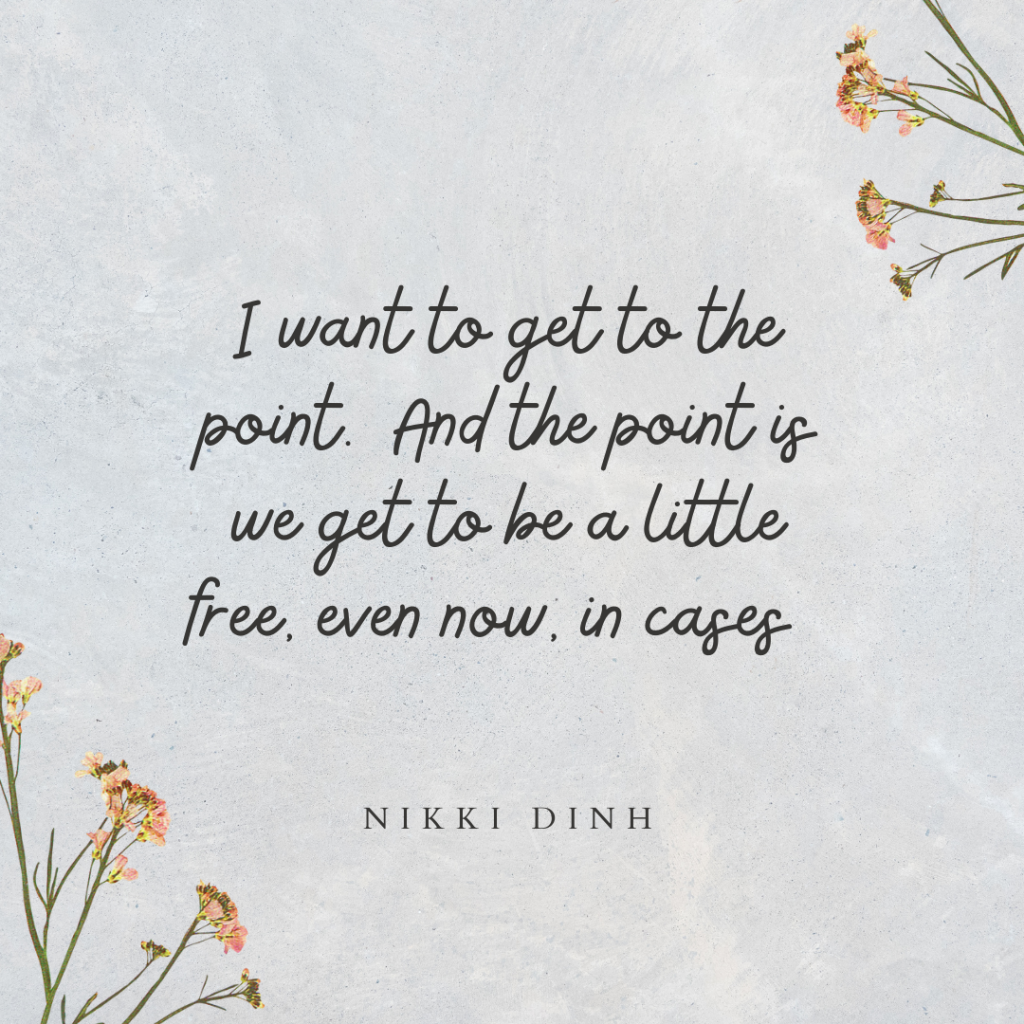
What's one thing that that Network Weaver, or even LLC is doing differently, to transform the field of leadership?
Ericka: We are shifting towards a different lens that asks: what does a collective liberation look like? What does it mean when we free ourselves and each other? That’s one change. We are also getting clear about what these questions around equity, liberation and transformation mean in different contexts. LLC is mostly domestic, whereas Network Weaver is international and therefore has a broader reach. Networks are not just interesting tools, but they actually result in change. How can we explore what a change ecosystem looks like and the role leadership plays in that? How can really thinking about the needs of varying stakeholders, and not just being focused on terms and buzzwords that are exciting, help us capture all the work that goes into the change process? How do we support the leadership of all of those other folks who are in that ecosystem? Holding space for those questions and others is one way I think we’re committed to doing things differently.
What is your vision for Network Weaver?
Nikki: Network Weaver is a tool and resource. Ericka and I have this analogy about pollination. In areas where bees and butterflies and all the natural super pollinators are dying off, there are efforts to self-pollinate or find other ways to pollinate. And that's why Network Weaver is so valuable to me. It's like an artificial butterfly. It’s trying to help solve a crucial short-term problem until we can get that butterfly population back up. It’s a useful tool to scale when we need to scale, but how can we also pay attention to what makes bees and butterflies thrive in the natural habitats because the goal always is to have natural networks. Growing up in a refugee community, we had a large cultural network and within that so many alternate systems to meet the needs of the community. You need to borrow money? You need prescription pills? There were people doing that for each other! I envision us also zooming out to see and appreciate a natural network of weavers that continue to connect and build alongside the Network Weaver space.
What's your vision for LLC?
Ericka: Oh, we have lots of ideas and hopes and dreams for LLC! Something that I hope doesn't change is that LLC is very relational. LLC is very people-focused, we care about people. It’s also a space that welcomes joy. And that's something we want to grow into. A vision that I have for LLC is that it is a space where people who want to lead in liberatory ways, and folks who want to support leadership that is transformational and liberatory, can collaborate. We are a space of experimentation, innovation, and community. I hope as a consequence of our work, that there are stronger movements for justice.
One of the things that I appreciate about LLC is that we are eco-centric rather than egocentric, which is something that our founder, my predecessor, used to say frequently, and I really value not having to make sure everyone knows that “it's us.” It’s more important that the work happened, rather than the credit be attributed to us. That focus on the communal, the collective, the ecosystem is something that remains part of the vision that I have for LLC. Our work has not just been about products and deliverables, but liberatory processes, and that has made the work fulfilling and joyful.
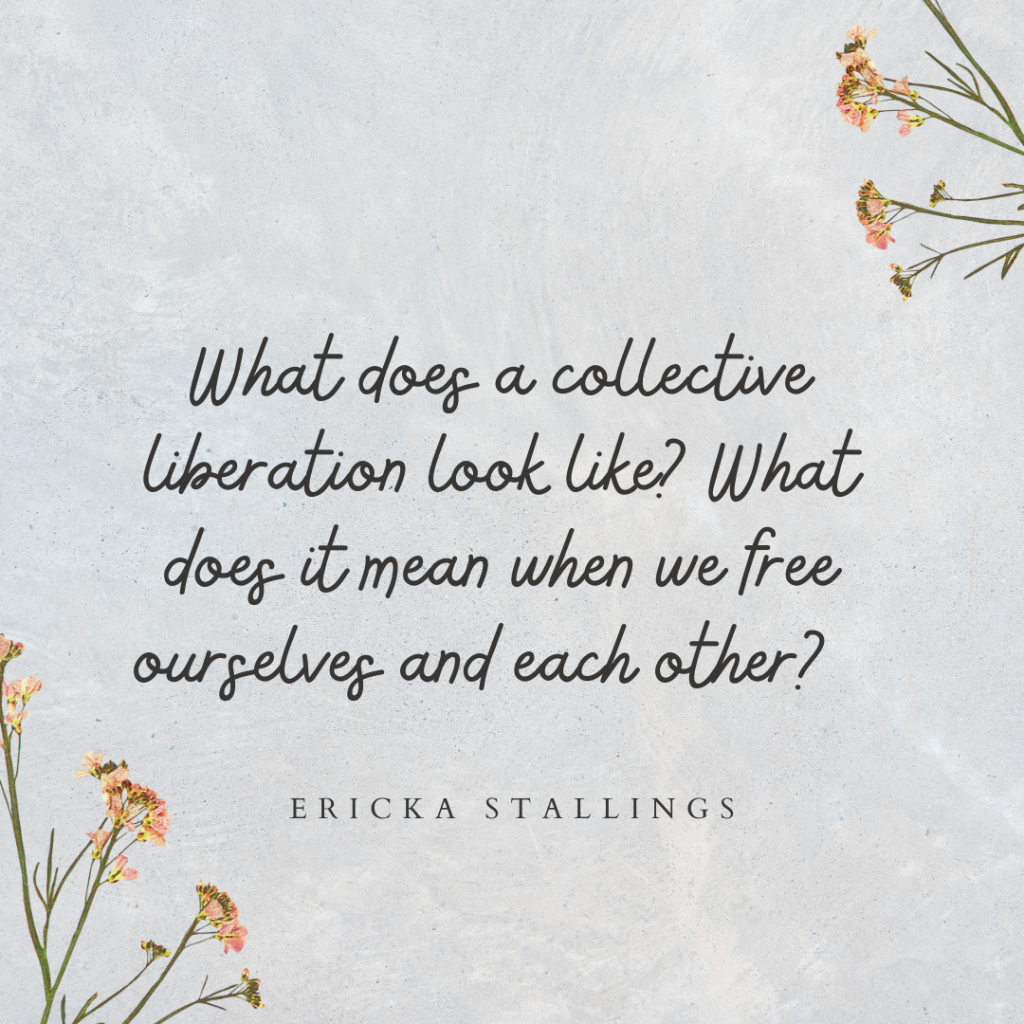
What’s a commitment you made to yourself during the pandemic that you intend to keep?
Nikki: I have made a commitment to root for me. It’s still a journey. I am surrounded by people like my sisters, my partner and my children, my collaborator Ericka, who think I'm so great. And I want to take on some of that energy and be like, I'm going to do it for me. And that's what has really emboldened me to be like, alright, look, we're doing liberatory work, we're gonna go there, because, you know, I was a lawyer—I know you can’t undo that kind of systems thinking overnight. I’ve had to work on this and believe in valuing this. And I've also known, because of my upbringing, that we can do better. So rooting for me is rooting for all folx entrenched in systems, for us to be a bit freer.
Ericka: One, I mean I have one commitment that I've made that is unexpected. And it's a group of women that I have coffee with, like virtual check ins with weekly.. We've been doing it since the beginning of the pandemic. The funny thing is we were not intimate friends before. We started this gathering to have regular conversations with agendas and learning goals and things like that, and they evolved or de-volved, depending on how you think about it, into very, very rich, deep emotional connections. I'm very proud and happy that I've continued to commit to these weekly check ins and also to those relationships.
Is there anything that you're like most excited for this year?
Nikki: We're doing some longer-term strategy work. In the next three to five years we will go bold with liberatory programming. Our lens for Network Weaver, for example, will be situated under the liberatory program side of the house. Everything we do will have to bring a kind of outside-the-system thinking which includes bringing in the perspectives and interests of people who are typically excluded from our systems. That said, I'm really excited to work with more people who are from other backgrounds, like refugees and trans folks, and queer folks, and people with disabilities. I have learned so much from people outside of our systems that I'm really excited for others to get that wisdom too.
Why LLC? Why Donate Now?
Ericka: One of my favorite quotes is: “if you give me a fish, you have fed me for a day. If you teach me to fish, you have fed me until the river is contaminated or the shoreline seized for development. But if you teach me to organize, then whatever the challenge, I can join together with my peers and we will fashion our own solution.”
With that in my mind, my hopes for the ongoing work of LLC and Network Weaver are in that vein; of prioritizing the people who are addressing issues in their communities and how folks in this space are supporting them. I'm hoping that the blog series we hope to launch soon will address how people are affirmatively and explicitly stepping back so that the people directly impacted come to the forefront. And I'm hoping these stories about the material, communal, and spiritual transformation that's happening help us see the real impact people are having on the communities they care about.

donate in the box above or click here
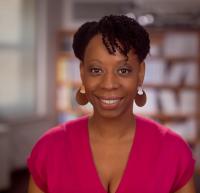
Ericka Stallings is the Co-Executive Director of the Leadership Learning Community (LLC) a learning network of people who run, fund and study leadership development. LLC challenges traditional thinking about leadership and supports the development of models that are more inclusive, networked and collective. Prior to LLC, Ericka was the Deputy Director for Capacity Building and Strategic Initiatives at the Association for Neighborhood and Housing Development (ANHD), supporting organizing and advocacy and leading ANHD’s community organizing capacity building work. Ericka also directed ANHD’s Center for Community Leadership (CCL) which provides comprehensive support for neighborhood-based organizing in New York City. At ANHD she formerly directed the Initiative for Neighborhood and Citywide Organizing (INCO), a program designed to strengthen community organizing in the local neighborhoods. Before working at ANHD she served as the Housing Advocacy Coordinator at the New York Immigration Coalition (NYIC), managing its Immigrant Housing Collaborative. In addition, Ericka co-coordinated the NYIC’s Immigrant Advocacy Fellowship Program, an initiative for emerging leaders in immigrant communities. She received her undergraduate degree from Smith College, studied International and Intercultural Communications at the University of Denver and Urban and Environmental Policy and Planning at Tufts University.
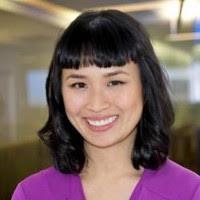
Nikki Dinh is the daughter of boat people refugees who instilled in her the importance of being in community. Though she grew up in a California county that was founded by the KKK, her family’s home was in an immigrant enclave. Her neighborhood taught her about resistance, resilience, joy and love.
Her lived experiences led her to a career in social justice and advocacy. As a legal aid attorney, she learned from and represented families in cases involving immigration, domestic violence, human trafficking, and elder abuse. Later, she joined the philanthropic sector where she learned from and invested in local leaders, networks and organizations throughout California. At Leadership Learning Community, she is excited that her work will continue to be guided by the belief that the people in communities we seek to serve are best positioned to identify and create solutions for their community.
About the Author

Sadia Hassan is a writer, organizational consultant and network weaver who enjoys using a human-centered approach to think through inclusive, equitable, and participatory processes for capacity building. She is especially adept at facilitating conversations around race, power, and sexual violence using storytelling practice as a means of community engagement and strategy building. She has received a Masters in Fine Arts, Poetry at the University of Mississippi and a Bachelor of Arts in African/African-American Studies from Dartmouth College. You can read more of her work at Longreads, American Academy of Poets, and The Boston Review. https://sadiahassan.com
feature photo by Lee 琴 on Unsplash
Networks: Resourcing Relationships and Interdependence for an Equitable Future Now
Networks for Equity and Systems Change
The events of the past year have made clear what many in and outside of philanthropy already knew: that equality in resource distribution is not equity, that much of what was thought impossible to change – telework policies, reporting requirements, fiduciary responsibilities – is suddenly possible, that what we need to shift big systems is interdependence (not codependence), and that what is needed for this shift to happen begins with strengthening our relationships with one another – as individuals, organizations, and communities.
Networks offer a structure for linking people and groups of people with a shared vision and shared values to build and strengthen the relationships necessary to shift big systems. By offering us opportunities to work together in ways that challenge us to build different understandings of and relationships to power and to each other, we are able to move in more interdependent and interconnected ways.
Many individuals and organizations – particularly those rooted in Black and Native communities, queer communities, and immigrant communities – have experience working in networks both rooted in and working to advance equity and justice yet are often not sufficiently resourced for this work. Other entities, including many funders, are bringing increased attention and resources to working in this way and yet these many groups that are poised to resource networks are still just learning about how to do so in ways that align with equity and manage disproportionate power dynamics.
In this moment of possibility for reimaging big systems to live our imagined future of love, dignity, and justice now, we are sharing some learning from a late-2019 gathering of nearly 70 network funders, practitioners, and participants about how network practitioners and some funders are nourishing and growing networks for equity and systems change.
An Experiential and Embodied Approach to Learning in Networks
The Networks for Equitable Systems Change gathering was co-created in partnership with Change Elemental, Uma Viswanathan and Matt Pierce at the Robert Wood Johnson Foundation, and a design team of network practitioners including Allen Kwabena Frimpong, Aisha Shillingford, Marissa Tirona, Robin Katcher, and Deborah Meehan. The group came together to engage with practices for building, resourcing, and sustaining networks. Together, we set out to learn about the following questions:
- How have funders and other organizations worked together in networks that promote equity and systems change?
- What are the barriers to resourcing networks for equitable systems change and what would it take to shift those barriers?
- What is the personal work and way of being needed to fully engage in networks, equity and systems change?
While desk research and interviews can be useful learning tools, we decided to take an experiential and embodied approach to learning about our questions. By bringing convening participants into the experience of network building in real time, we were able to create shared experiences that led to shared understanding about what it takes to build and sustain networks that can shift systems.
We can’t shift systems when we’re only touching one part of the elephant. We need spaces where the whole ecosystem comes together, bringing various perspectives that can give us a picture of the whole. Rather than host separate conversations with funders, intermediaries, and grassroots organizations, the gathering brought together many parts of network ecosystems to discuss how folks were experiencing power sharing within networks.
Below are some of the ways the experiential design of the convening – in addition to the deep expertise and knowledge that participants brought to bear – helped co-create our elephant and answer some initial questions about networks…
We Challenged Dominant Ways of Building Alignment through Rigid Frameworks and Definitions and Instead Reached Shared Understanding with Storytelling
Through experiential learning and storytelling, convening participants aligned on shared definitions for what we mean by a network as well as successful practices for building, sustaining, and resourcing networks.
With our design team, we co-created a learning network that engaged people with different access to resources, different kinds of power, and different experiences and roles in networks. We were concerned about bringing so many different folks together to talk about networks when we all were coming in with these different experiences, definitions, etc. We faced the same pressure points that networks face: how do we distribute resources across this group and compensate people for their time and labor? How can we facilitate more open discussions with transparency and deeper sharing among groups who have different priorities, expertise in networks, roles in the movement ecosystem, and kinds of power? Where do we need alignment and shared definitions and where should we hold generative tensions and conflict?
Initially, we considered aligning the group through some shared definitions and research in networks before coming together, but that process seemed time consuming and didn’t fully honor the wisdom in participants’ different perspectives and experiences. Instead of creating written definitions and a compilation of research to align participants on a common framework, we had attendees prepare spark stories – a short story that communicated their experiences and challenges in a network when working across funders, individuals, grassroots organizations, and other entities. Participants shared stories in small groups and each group created an image to show similarities and differences in themes across stories. The storytelling accelerated shared understanding in small groups and highlighted the multiple perspectives in how participants understand and experience networks.
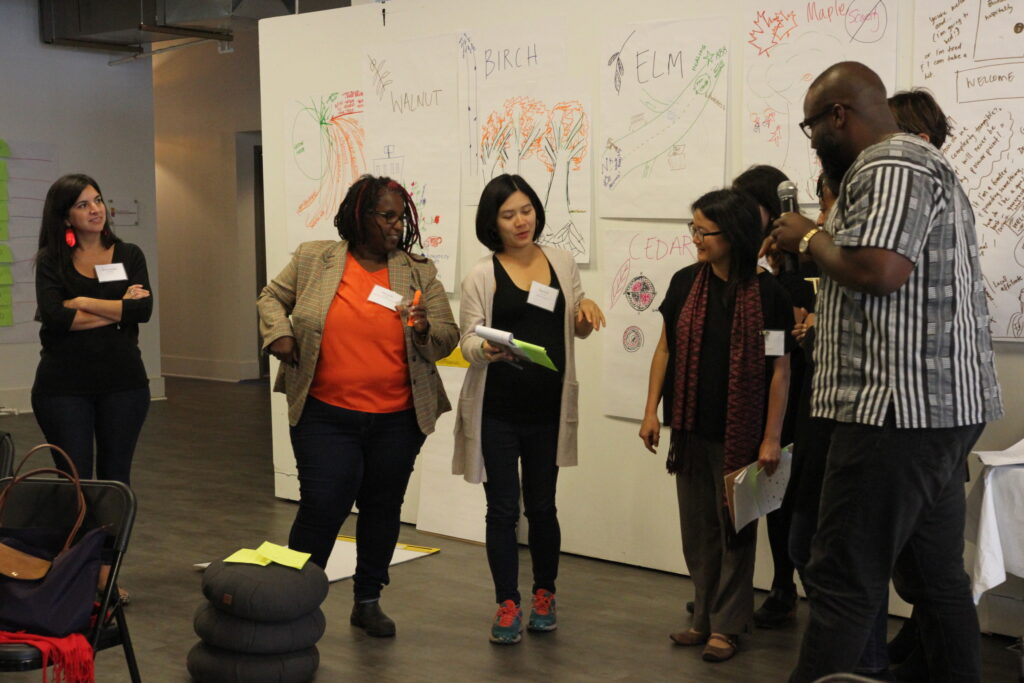
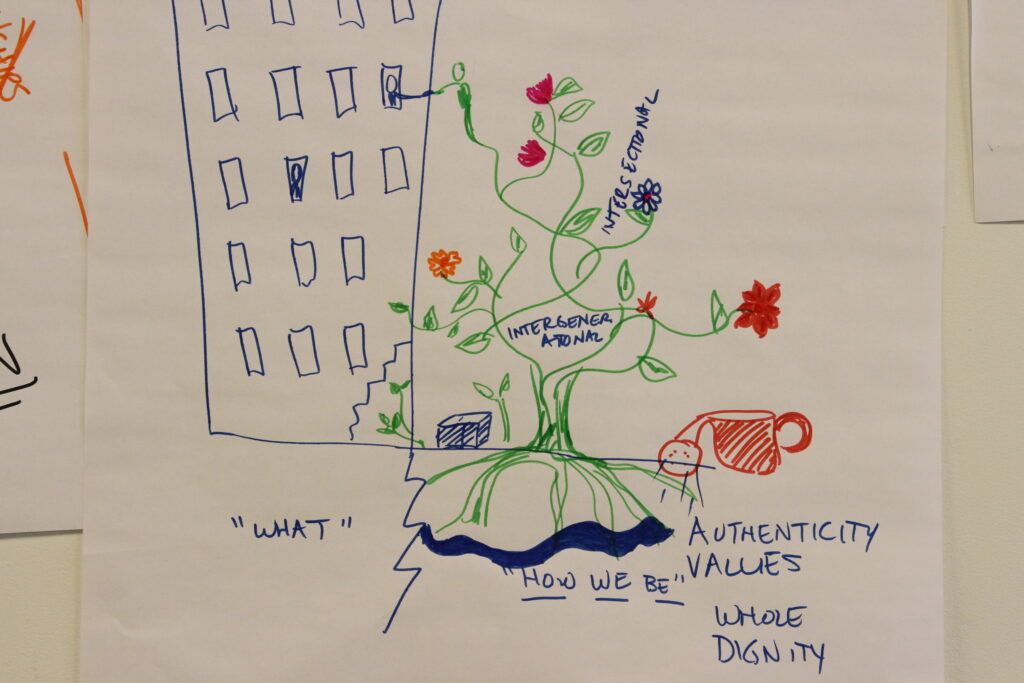
Many participants also shared their spark stories in video conversations. In this video, design team member Allen Kwabena Frimpong and Rachel O’Leary Carmona from AdAstra Consulting share their own definition of a network.
We Used Art Making to Illuminate Power Differences and Start Deeper Conversations about Power Sharing in Networks
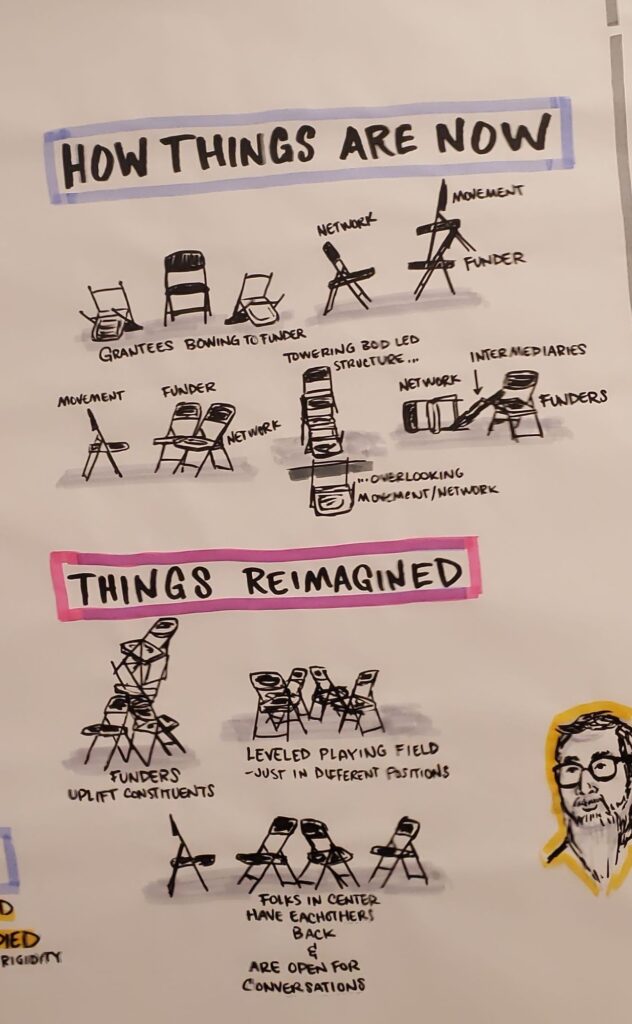
Navigating power differentials – including naming and managing them – was a key element in supporting shared learning in this diverse space and also mirrored the ways in which engaging with power can create generative conflict that supports network building or exacerbates unnamed tensions that derail it.
At one point before the convening, some funders were feeling nervous about their power relative to other groups and considered having a separate space. We ultimately decided against that and instead brought funders together to discuss how we might acknowledge and visibilize power differentials (rather than obscure them). We also saw this as a way for funders to build practices for being in spaces where they have more power related to resourcing (such as in a network).
In an exercise from Theater of the Oppressed participants could make visible the power differences between funders that financially resource networks and other network participants. Participants positioned chairs differently based on their vantage point and each new sculpture was in dialogue with the previous one, creating space for different perspectives in support and in tension with each other.
In this spark story, Sage Crump, Cultural Strategist, shares her experience with power as an intermediary navigating the relationships between networked organizations and funders.
Starting with this creative exercise created a bridge to harder conversations about the barriers to equity in resourcing networks such as how money is distributed across network participants, inappropriate use of power, or challenges that come up when there is misalignment between the equity values of a network and the culture of a funding institution.
Convening participants Eugenia Lee of Solidaire and Rajiv Khanna from Thousand Currents discuss what it takes for people inside large funding institutions to align foundation culture with equity and other values needed to better support networks.
We Made Space for New Conversations about Resource Sharing and New Processes for Resource Distribution
Equity should inform how we resource people to be and learn together across power, identity, and roles and then to do together (in networks). Yet external systems, norms, and habits can often inhibit us from living out our values. One example of this is the radical redistribution of resources in neworks, which requires leaning into new practices for how we work together and support each other given our proximity to power and resources.
To financially support people’s attendance at the gathering and their contributions to the space, we created an equity fund. The set-up and distribution of the convening’s equity fund provided the group with an opportunity to lean into these new ways of being. It required vulnerability from participants in asking for what we need and for those holding financial systems to figure out creative ways of reducing the administrative burden on participants, for example by offering stipends rather than reimbursing receipts.
To guide us in these new (to some) ways of being and doing, we created a set of fund principles. Adapted from Leadership Learning Community, the principles included:
- People can ask for what they want and need
- Adopt an abundance mindset (we can always find a way to get more)
- Function with trust, no questions asked
- Give people examples of what they might use funds for (e.g., lodging, childcare, funds to cover a missed day of work for hourly professionals, etc.)
At first, people asked for very little. After more enthusiastic nudges and encouragement to lean into the principles and the discomfort of asking (for example, by looping back to confirm, clarifying our equity principles, and sharing more examples of what people have asked for) more participants felt comfortable asking for what was truly needed.
The initial hesitancy from participants prompted us to think more about who feels entitled to ask for equity funds and how that may relate to our individual sense of worth (eg. how much do I really need this?) and relationship to the collective (e.g., how much might others need relative to me?).
During the convening, we shared what we learned from managing our equity fund in this meme-filled presentation, including how we pushed for a “no receipts” policy, which was challenging to navigate from a compliance perspective but saved a great deal of administrative time.
In this spark story, convening participants Elissa Sloan Perry from Change Elemental and Alexis Flanagan from the Resonance Network share another example of resource distribution within a network, including the vulnerability and trust needed to talk openly about personal wealth as a way towards more equitable resource distribution.
While some of the experiential learnings from the convening are captured above, network practitioners and funders also brought together learnings from past experiences in leading with equity and navigating power differentials within networks including how funders operate in networks; the different forms and shapes networks might take; capacity, impact, and infrastructure needs in networks; and ways of being needed to build, resource, and support networks.
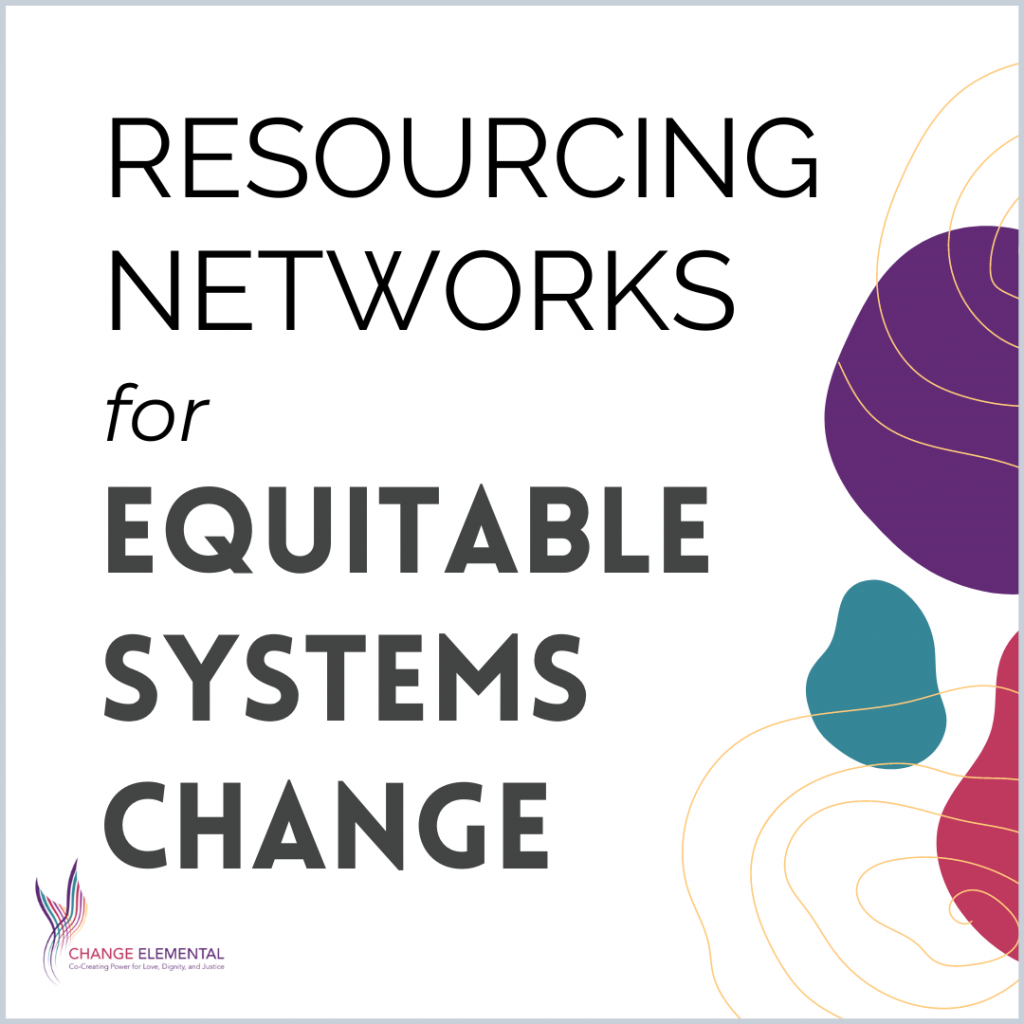
To dig into more stories and insights as well as many other resources about networks, see the report, “Resourcing Networks for Equitable Systems Change: Perspectives from Funders, Intermediaries, Individuals and Organizations on How We Fund and Support Networks for Equity.”
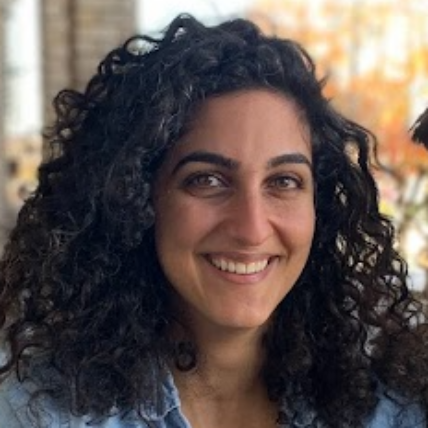
Natalie Bamdad (she/her/hers), joined Change Elemental in 2017. She is a queer and first-gen Arab-Iranian Jew, whose people are from Basra and Tehran. She is a DC-based facilitator and rabble-rouser working to strengthen leadership, organizations, and movement networks working towards racial equity and liberation of people and planet.
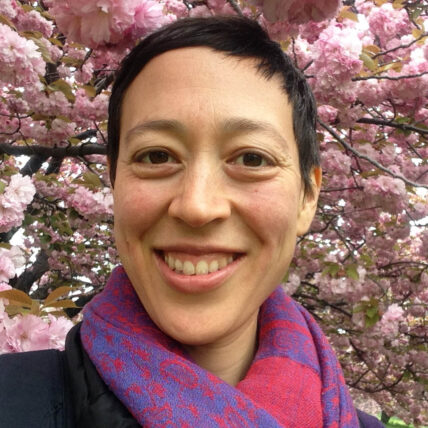
Alison Lin (she/her/hers) supports leaders in authentic collaborations to transform people and systems toward love, dignity, and justice. With over 20 years of leadership experience, she draws from work in race equity, complex systems change, organizational development, learning through experimentation and life with a focus on issues affecting LGBTQ and BIPOC communities. She joined Change Elemental in 2017.
Video recording, editing, and photos by Breathe Media Group
Graphic recordings by Brandon Black
Cover photo by Brian Stout
Originally published at Change Elemental

Network Weaver is dedicated to offering free content to all – in support of equity, justice and transformation for all.
We appreciate your support!
donate in the box above or click here
From Learning to Doing
Many years ago I was teaching high school English on a small island in SE Alaska. I asked the class to compare a piece of literature to the story of the Three Little Pigs. Half of the class couldn't do the assignment because they had never heard of the story of the Three Little Pigs. That changed me forever.
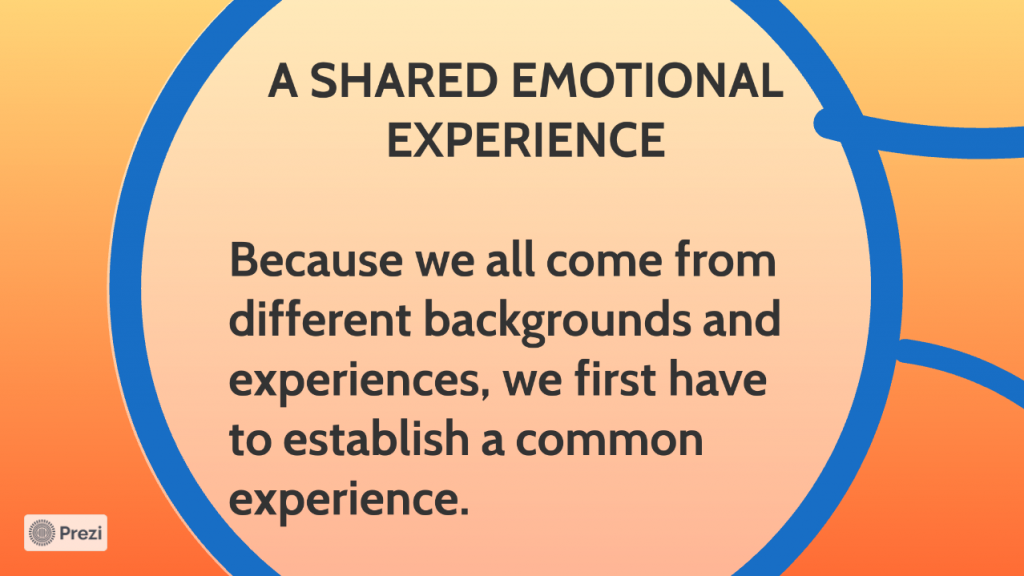
Without shared experiences, learning communities often talk past each other. Inevitably there is a judgement on one side or the other. Each learner brings his/her own experiences to a conversation and uses those unique experiences to make sense of things. Coming together as a learning community to sort through what we understood from something new that is introduced to us is sometimes very frustrating because of all the different experiences brought to the table. To help with that issue in almost any learning community, you can initiate a common experience/action for all participants. When an action is experienced together, suddenly there is more justice in the conversation. The playing field is leveled and the real conversation can begin.
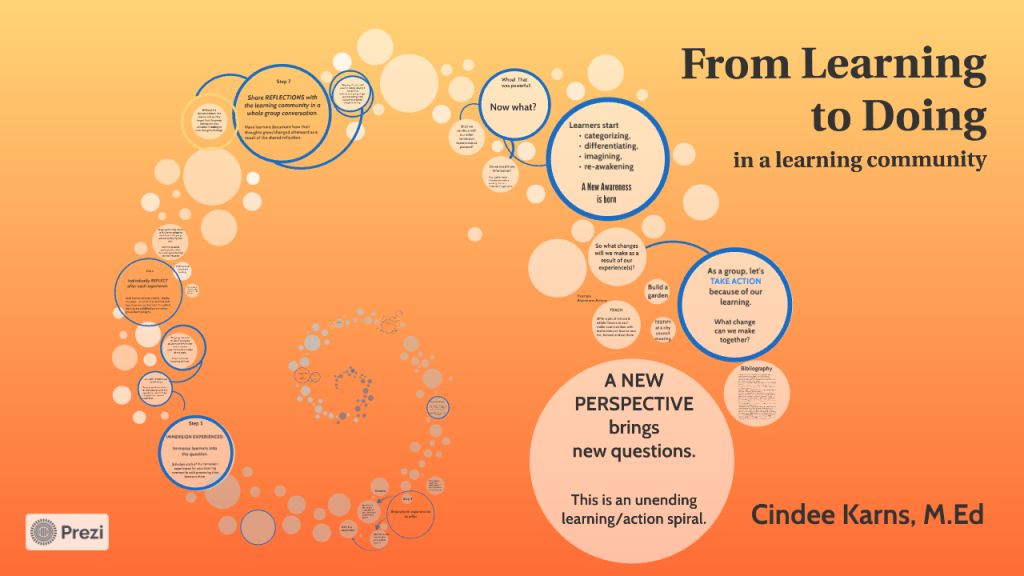
This is a depiction of how that process can be set up for any learning community. The condition is that the learning spiral never ends....every round goes higher, higher. The outcome is that participants almost always feel like they can act on their new knowledge and continue the learning cycle on their own.

Click HERE to access the "From Learning to Doing" resource. A slide presentation on how to create shared experience in a community to initiate actionable change.
Click HERE to access the slide show directly at prezi.com

Cindee Karns, a life-long Alaskan, is a retired middle school teacher with a master's in Experiential Learning. She is founder/weaver of the Anchor Gardens Network, which is attempting to bring increased food security to Anchorage. She and her husband live in and steward Alaska's only Bioshelter
Appreciate Network Weaver's library of free offerings and resources?
Donate below or click here
thank you!

